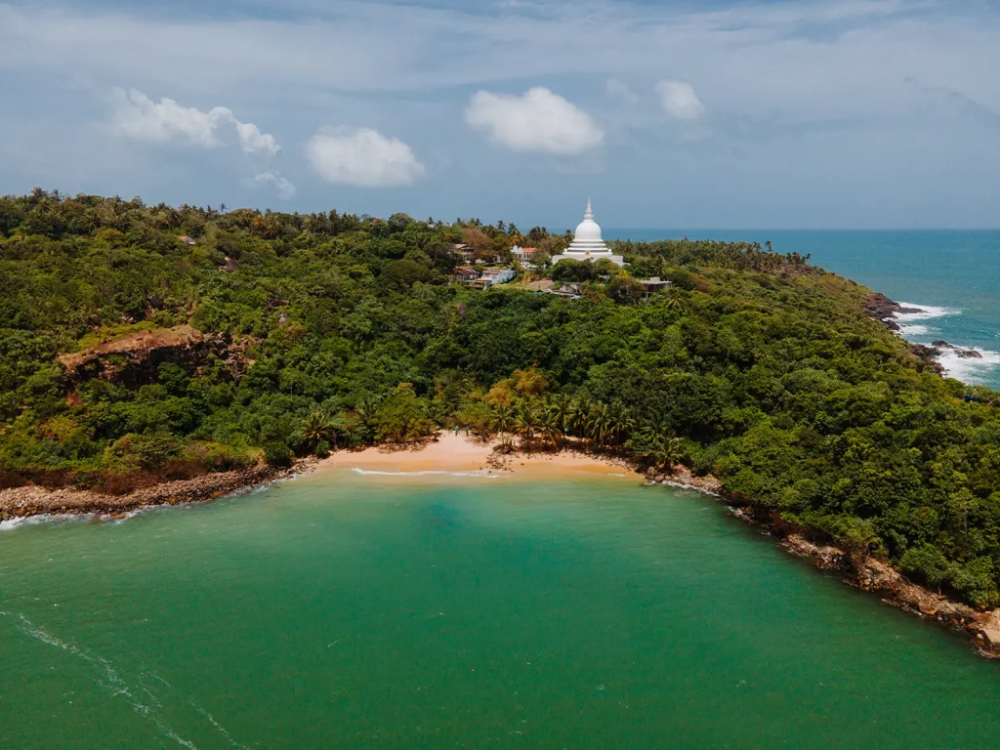

The coastal city of Galle, in the southwestern part of Sri Lanka, has been a significant player in the history of maritime trade and colonial influences due to its strategic location. Its lush tropical beaches, rich history, and cultural heritage have made it an iconic destination for tourists. Among its hidden gems is Jungle Beach, located near Unawatuna, which has recently gained popularity among travelers seeking seclusion and natural beauty.
Jungle Beach, much like the rest of Galle, was relatively unexplored for tourism purposes until the latter part of the 20th century. For centuries, the main focus of the area was the Galle Fort, which stands as a testament to the Portuguese, Dutch, and British colonial periods. It wasn't until the 1970s and 1980s, with the global rise in adventure and eco-tourism, that the broader region of Galle started to gain recognition as a tourist destination.
With Sri Lanka's economic liberalization in the late 20th century, there was a substantial boost in the country's tourism sector. Jungle Beach, being less accessible and more secluded than the adjacent Unawatuna Beach, remained relatively untouched and was primarily known by locals and adventurous travelers. However, the 2000s saw a burgeoning interest in off-the-beaten-path experiences, and Jungle Beach was poised to offer just that - an intimate experience with nature, away from the crowded mainstream beaches.
In the past decade, Jungle Beach has experienced a growth in popularity, especially among tourists who are seeking quieter and more pristine beach experiences. A few boutique hotels and eco-friendly accommodations have sprung up, catering to these niche demands. The tranquility of Jungle Beach, coupled with its crystal-clear waters and the surrounding tropical forest, makes it an idyllic spot for relaxation and marine exploration.
The global COVID-19 pandemic had a significant impact on tourism worldwide, and Jungle Beach was no exception. However, the destination has seen a slow revival as Sri Lanka reopened for tourism, with health and safety protocols in place to ensure the wellbeing of both tourists and locals.
Sustainability is a core focus in the promotion and development of Jungle Beach. The local community and authorities are mindful of the delicate ecosystem and are implementing measures to ensure that tourism does not disrupt the natural habitat and biodiversity. Responsible tourism practices are being promoted, emphasizing waste management, conservation of marine life, and support for local economies.
The latest trend in Jungle Beach tourism is the increasing popularity of wellness and nature retreats. Visitors are not only looking to enjoy the beach and sun but also to engage in activities such as yoga, meditation, and nature walks which promote physical and mental wellbeing. The trend aligns perfectly with the serene and restorative ambiance of Jungle Beach, providing an enriching experience that combines leisure with healthful living.
In conclusion, the evolution of tourism in Jungle Beach is a reflection of global trends favoring sustainable and immersive travel experiences. As the world becomes increasingly aware of environmental conservation and responsible tourism, Jungle Beach stands out as a destination that offers both a breathtaking natural setting and a commitment to preserving its untouched beauty for future generations.